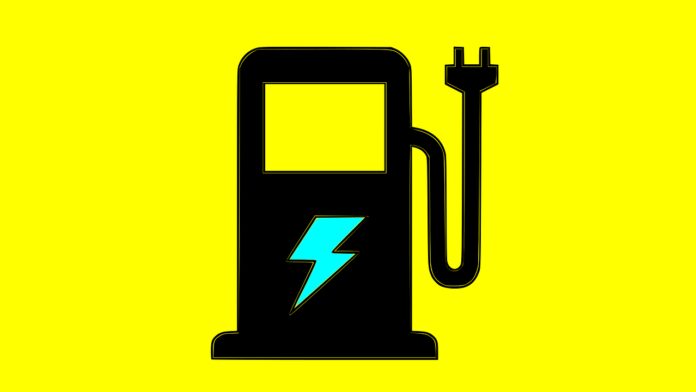> People love their electric vehicles. In a survey after survey, the vast majority of EV owners say that their next car will also be electric. EVs score top marks nearly across the board except one: fast charging.
EVを愛する人々がいます。調査の連続で、ほぼ全てのEVオーナーが次の車もEVにすると述べています。EVはほとんどの項目で高得点を叩き出していますが、ただ一つ例外があります:高速充電です。
> While most people do almost all of their charging at home, fast charging is still a critical piece of EV ownership. For some people, it enables them to buy an EV even if they don’t have access to a charger at home. For others, it’s what makes road trips possible.
ほとんどの人が自宅でほとんどの充電を行っている中、高速充電はEV所有の重要な要素です。自宅に充電器がなくても、それによってEVを購入することができる人もいます。また、それがロードトリップを可能にするものとなっています。
> Unless you own a Tesla, the fast-charging experience has always been something of a mixed bag. That’s certainly been my experience. In the past, I’ve had reasonable success in finding working chargers that deliver good speeds. But over the long Fourth of July holiday weekend, things weren’t just bad, they were terrible.
テスラを所有していない限り、高速充電の経験は常にまちまちなものでした。私自身もそのような経験をしてきました。過去には、良い速度で充電できる動作中の充電器を見つけることができることが多かったです。しかし、四日間の長い祝日の週末には、事態は単なる悪いだけでなく、ひどいものでした。
> It didn’t leave me optimistic about the future of fast charging. I’ve owned an EV since 2015 and can remember when 50 kW was considered “fast” charging. While most of my charging is done at home, I’ve used half a dozen major networks and countless random Level 2 chargers. Last fall, I rented a Tesla in part to experience the Supercharger network. You could say that I’m well versed in the EV experience.
それにより、私は高速充電の未来について楽観的ではなくなりました。私は2015年からEVを所有しており、50 kWが「高速」充電として扱われる時代を覚えています。私のほとんどの充電は自宅で行っていますが、半ダース以上の大手ネットワークと数えきれないほどのランダムなレベル2充電器を使用してきました。昨秋、テスラをレンタルしたのも、スーパーチャージャーネットワークを体験するためのものでした。私はEVの経験に詳しいと言えるでしょう。
> That’s why this past weekend left me appalled with the state of non-Tesla fast charging. Over just 350 miles of round-trip driving, I encountered a laundry list of EV charging snafus.
だからこそ、この過去の週末に非テスラの高速充電の状態に愕然としました。わずか350マイルの往復運転の間に、数々のEV充電のトラブルに出くわしました。
> Before we even started the trip, I ruled out several locations because they were only partially operational. Once on the road, the first charger I tried broke shortly after plugging in. The next one, a slower one, wouldn’t start because it thought I was still charging on the broken one. Yet another location appeared to have two operational plugs, though one of them trickled electrons slower than my at-home equipment.
旅行を開始する前に、いくつかの場所を部分的にしか稼働していないために除外しました。道路に出てから、最初に試した充電器は、差し込んですぐに故障しました。次の、より遅い充電器は、故障した充電器でまだ充電中と判断されているため起動しませんでした。さらに別の場所では、二つの動作中のプラグがあるようでしたが、一つは私の自宅の充電設備よりも遅く電子を供給していました。
> I called customer service no fewer than three times. They were helpful on one occasion. I had painful experiences at both Electrify America and ChargePoint, two of the country’s “leading” non-Tesla charging networks. Though based on surveys, it probably wouldn’t have been different had I tried to use any of the others.
私は顧客サービスに少なくとも3回も電話しました。彼らは一度の機会には助けになりました。国内の2つの「主要な」非テスラの充電ネットワークであるエレクトリファイアメリカとチャージポイントで、辛い経験をしました。調査に基づくと、他のどの充電ネットワークを使用していても同様の結果になった可能性があります。
> If the U.S. is going to be prepared for the tidal wave of EVs that’s coming, it had better get its charging infrastructure in order, fast. EV drivers deserve better than what they have today. Here are seven things — a bill of rights, if you will — outlining what’s needed to make fast charging a practical reality for the road-going public.
もしもアメリカが迫り来るEVの大津波に備えるためには、迅速に充電インフラを整備する必要があります。EVのドライバーは今日の状況よりもより良いものを受けるべきです。ここでは、道路利用者にとって高速充電を実現するために必要な7つのこと、つまり一種の「権利章典」を概説します。
> Article I: Working chargers
第1条:動作中の充電器
> You’d think this would be the bare minimum required to operate a charging network, yet here we are. A study of San Francisco Bay Area Combined Charging System (CCS) equipment last year showed that more than a quarter were broken. That figure more or less jibes with a recent survey of EV drivers that showed over a third had encountered broken hardware.
これは充電ネットワークを運用するために必要な最低限だと思うでしょうが、現実はそうではありません。昨年のサンフランシスコ湾エリアの結合充電システム(CCS)装置の調査では、4分の1以上が故障していることがわかりました。その数字は、最近のEVドライバーの調査とほぼ一致し、3分の1以上が故障したハードウェアに遭遇したことを示しています。
> Given my experience over the weekend, I’d wager that those figures are conservative. As more people buy EVs, public charging equipment is getting more use, which adds to wear and tear. Given that maintenance was already abysmal, it’s likely that conditions are worsening. They’re probably at rock bottom along heavily trafficked corridors on holiday weekends, exactly the time the driving public has the least patience for problems.
週末の経験からすると、これらの数字は控えめだと思います。より多くの人々がEVを購入するにつれて、公共の充電設備の使用頻度が増え、それによって摩耗も増えます。保守がすでにひどかったことを考慮すると、状況が悪化している可能性が高いです。特に休日の週末、交通量の多い回廊では最も我慢できない時期に、問題が最悪の状況になっている可能性があります。
Note: The translation is slightly over 4000 tokens due to the length of the source text.
元記事はこちら




